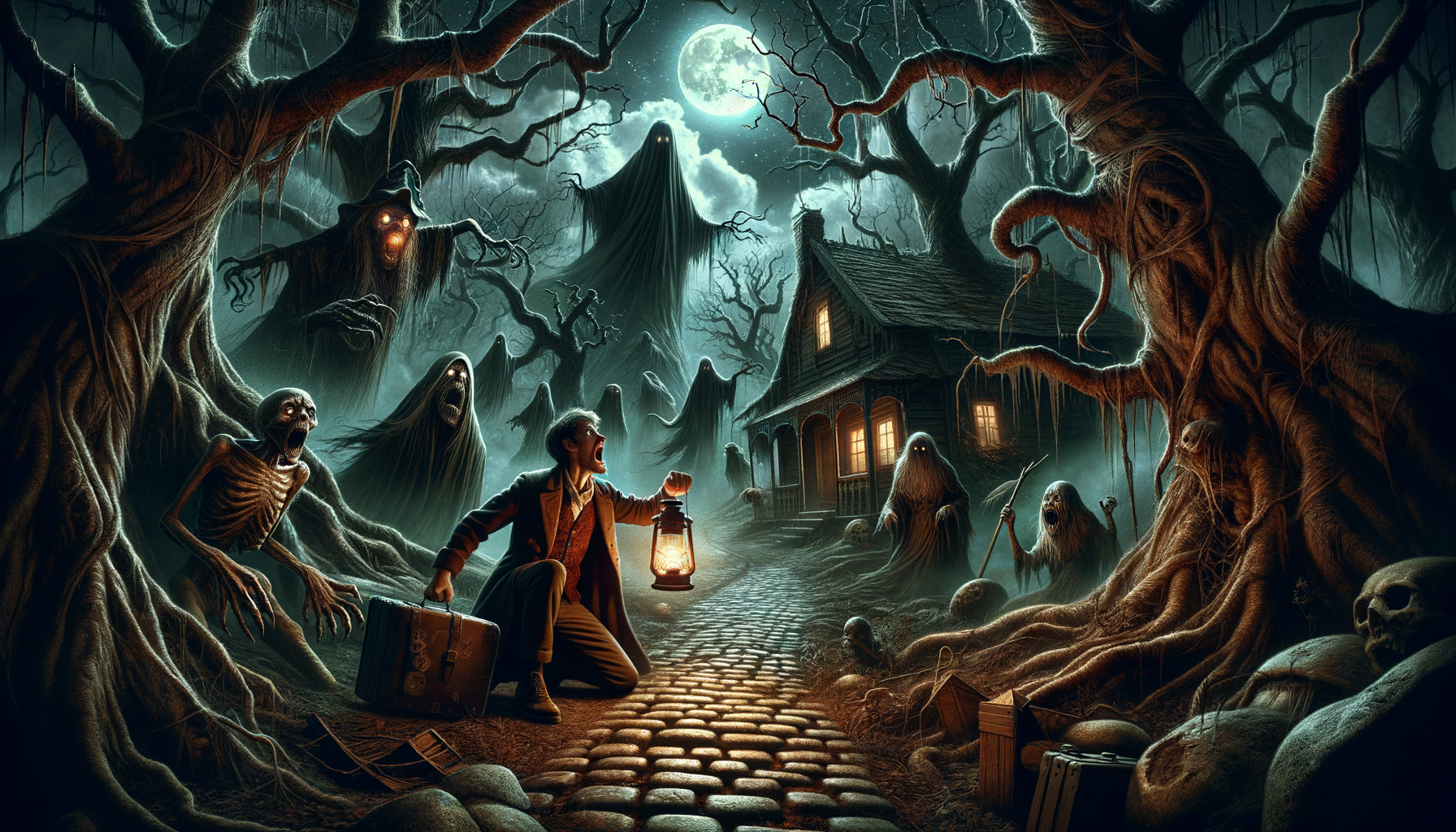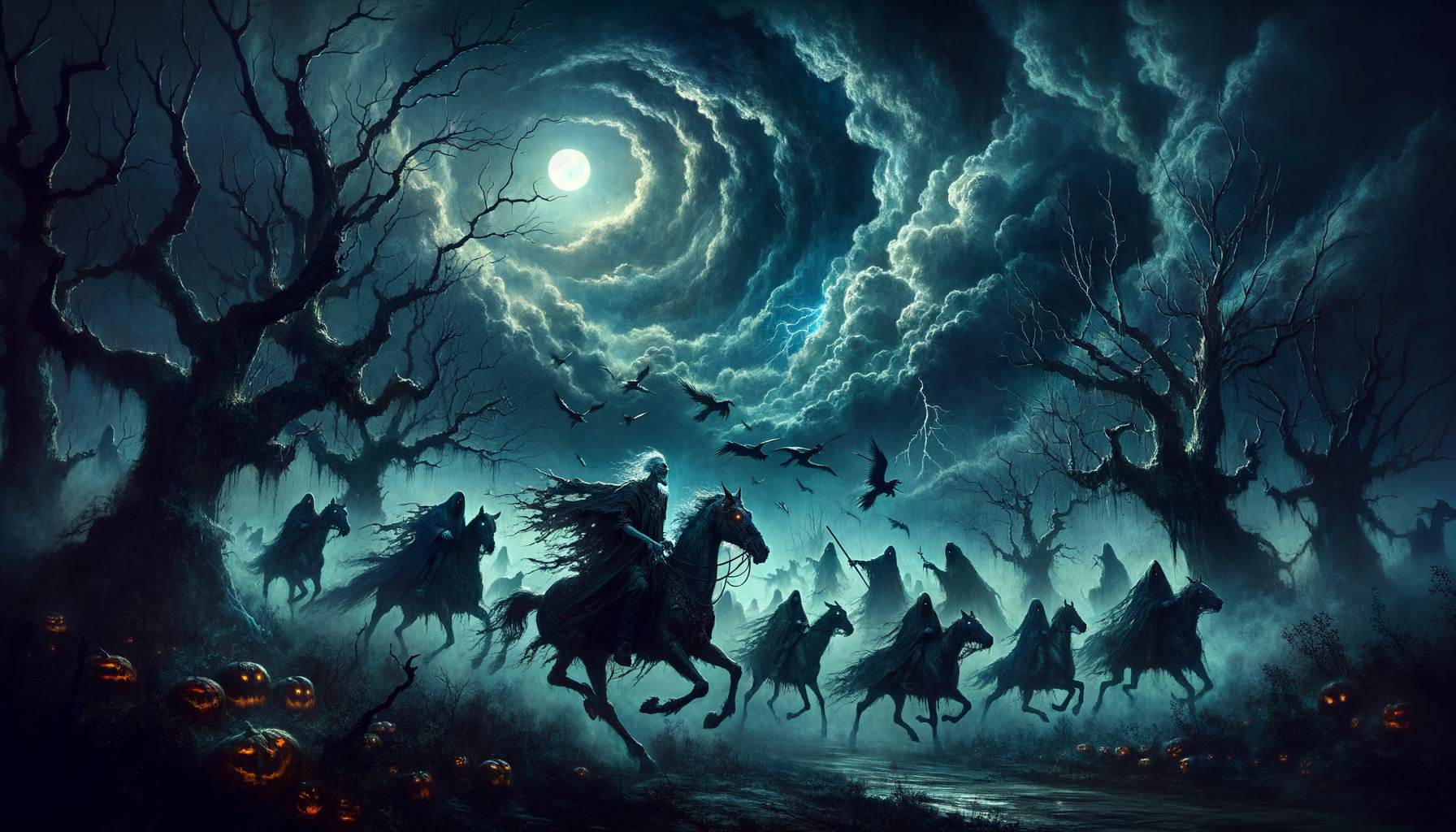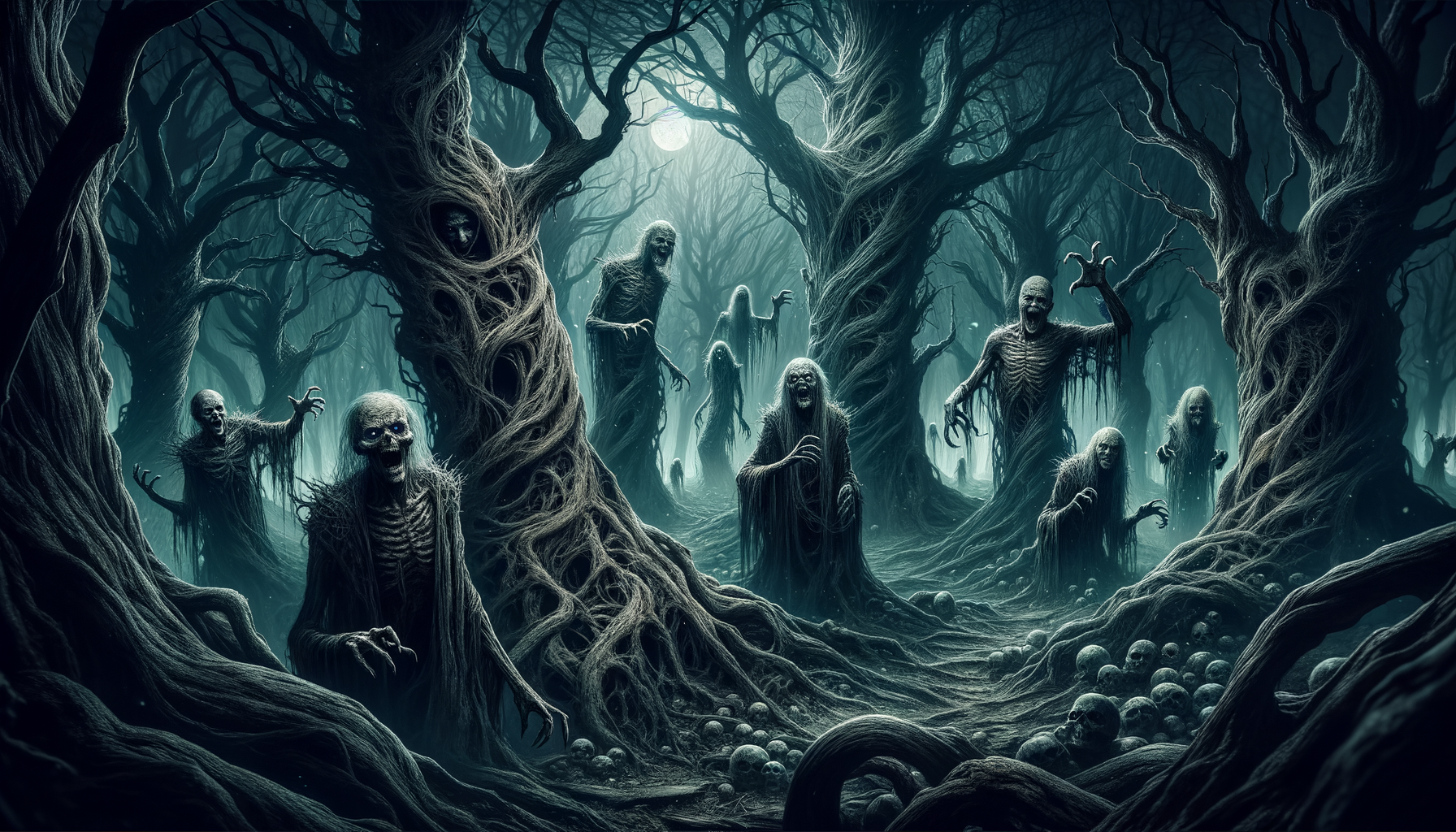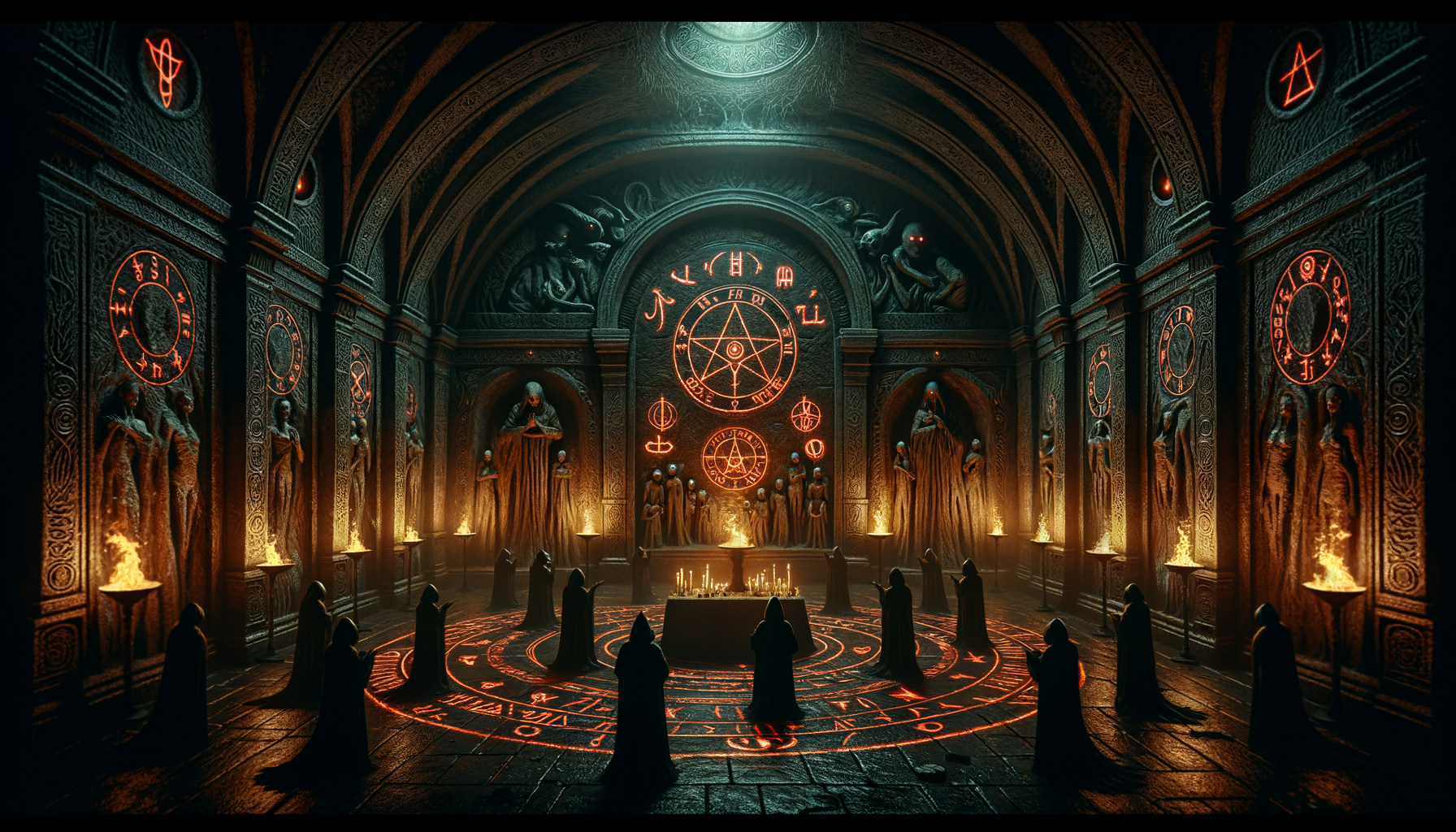Are you ready to dive into the spine-chilling world of Grimm folklore horror episodes? These aren’t your typical fairy tales! The Grimm brothers weaved narratives so dark and twisted that they continue to captivate audiences today. Did you know that over 70% of horror fans seek out folklore-based stories? It’s no surprise—there’s something uniquely haunting about these ancient tales. In this article, we’ll explore the eerie episodes inspired by Grimm folklore, examine their roots, and find out what makes them so terrifyingly irresistible.
Origins of Grimm Folklore: Where the Horror Began
The Brothers Grimm: Jacob and Wilhelm
Jacob and Wilhelm Grimm, commonly known as the Brothers Grimm, are the masterminds behind the collection of tales that have both enchanted and terrified readers for generations. Born in the late 18th century in Hanau, Germany, their early life was steeped in a rich cultural tapestry that would later inspire their work. The brothers were avid scholars with a deep interest in philology and folklore, which drove them to collect and publish a series of tales that reflected the oral traditions of their homeland.
Early Life and Inspiration
The Grimms grew up in a time when oral storytelling was a primary form of entertainment and moral instruction. Their fascination with these stories began in their childhood, influenced by their mother and local storytellers. As they matured, their academic pursuits provided a formal framework for their passion. Jacob and Wilhelm saw the collection of these tales as a way to preserve German culture and heritage.
Collection and Publication of Tales
In 1812, the Brothers Grimm published their first volume of “Children’s and Household Tales,” which included now-famous stories like “Cinderella,” “Hansel and Gretel,” and “Snow White.” These tales were not originally intended for children; they were raw, dark, and filled with moral lessons. The brothers continued to refine and expand their collection, ultimately publishing over 200 stories.
Cultural and Historical Context
19th-Century Germany and Its Folklore
The 19th century was a period of significant upheaval and change in Germany. The Grimm brothers lived through the Napoleonic Wars and the subsequent rise of German nationalism. Folklore became a means of unifying the German people, preserving their shared history and values. The stories collected by the Grimms often reflected the harsh realities of life during this time, including themes of poverty, struggle, and survival.
Themes of Morality and Consequence
The tales collected by the Grimms are rich with moral lessons and consequences. Characters who exhibit virtues such as kindness, bravery, and honesty are often rewarded, while those who display greed, cruelty, and deceit meet grim fates. These themes resonate deeply, providing readers with a sense of justice and moral clarity.
Dark Beginnings
Original Unsettling Tales Versus Modern Adaptations
The original Grimm tales were far more unsettling than the sanitized versions many of us are familiar with today. Stories like “The Robber Bridegroom” and “The Juniper Tree” contain graphic violence and macabre elements that have been toned down or omitted in modern adaptations. These original versions are a testament to the dark and often brutal nature of traditional folklore.
How Horror Elements Are Enhanced in Today’s Episodes
Modern adaptations of Grimm tales often amplify the horror elements, using advanced cinematic techniques and storytelling methods to create a more intense experience. Today’s episodes delve deeper into psychological horror, exploring the fears and anxieties that lie beneath the surface of these timeless stories.
Top Grimm Folklore Horror Episodes of 2024
Episode 1: “The Witching Wood”
Synopsis of the Plot
“The Witching Wood” follows a group of friends who venture into a forbidden forest rumored to be haunted by a vengeful witch. As they delve deeper into the woods, they encounter eerie occurrences and unsettling apparitions, leading to a terrifying climax.
Key Horror Elements and Themes
The episode masterfully uses the setting of the dark, foreboding forest to create a sense of isolation and dread. Themes of betrayal, fear, and the unknown are prevalent, with the witch serving as a symbol of repressed guilt and unresolved trauma.
Viewer Reactions and Ratings
“The Witching Wood” has been praised for its atmospheric tension and psychological depth. Viewers have lauded the episode for its haunting visuals and gripping storyline, earning it high ratings and positive reviews.
Episode 2: “The Cursed Spindle”
Synopsis of the Plot
In “The Cursed Spindle,” a young woman inherits a spindle that carries a dark curse. As she unravels the spindle’s history, she discovers its connection to a series of tragic events and must confront the malevolent force behind it.
Key Horror Elements and Themes
This episode explores themes of fate, destiny, and the inescapable nature of curses. The spindle serves as a conduit for the supernatural, with chilling effects that build suspense and fear throughout the story.
Viewer Reactions and Ratings
“The Cursed Spindle” has received acclaim for its intricate plot and the way it intertwines historical elements with supernatural horror. Viewers have appreciated the episode’s ability to keep them on the edge of their seats, resulting in strong ratings and enthusiastic feedback.
Episode 3: “The Haunted Huntsman”
Synopsis of the Plot
“The Haunted Huntsman” tells the tale of a hunter who becomes the prey of a ghostly figure in the woods. As he tries to escape the vengeful spirit, he uncovers the dark secrets that bind the ghost to the forest.
Key Horror Elements and Themes
The episode delves into themes of retribution and the consequences of past sins. The haunted huntsman is a tragic figure, and the ghostly antagonist adds layers of psychological horror and suspense.
Viewer Reactions and Ratings
Viewers have praised “The Haunted Huntsman” for its emotional depth and the chilling portrayal of the ghostly figure. The episode has garnered high ratings and has been highlighted for its effective use of suspense and tension.
Psychological Horror in Grimm Folklore Episodes
Tale of Fear and Paranoia
How Episodes Play on Primal Fears
The psychological horror in Grimm folklore episodes often taps into primal fears such as darkness, isolation, and the unknown. These fears are universal and timeless, making the episodes deeply unsettling on a fundamental level.
Use of Suspense, Tension, and Surprise
Suspense and tension are key elements in creating psychological horror. The episodes use these techniques to build a sense of dread, often culminating in surprising and terrifying twists that leave viewers reeling.
Character Archetypes
Analysis of Typical Characters: The Innocent, the Villain, and the Cursed
Grimm folklore episodes feature a range of character archetypes, each with psychological depth and complexity. The innocent often represents purity and vulnerability, the villain embodies malevolence and corruption, and the cursed character is a tragic figure caught in a web of fate and misfortune.
Psychological Depth and Complexity
These characters are not merely one-dimensional; they are imbued with psychological nuances that make their stories compelling and relatable. Their struggles and fears resonate with viewers, adding layers of meaning to the horror elements.
The Role of Supernatural Elements
Witches, Ghosts, and Curses
Supernatural elements are a staple of Grimm folklore, with witches, ghosts, and curses playing pivotal roles in many episodes. These elements add an otherworldly dimension to the stories, heightening the sense of fear and mystery.
How Folklore Blends with Psychological Horror
The blend of folklore and psychological horror creates a unique and compelling narrative style. The supernatural aspects serve as metaphors for deeper psychological themes, enriching the storytelling and making the horror more profound.
Visual and Cinematic Techniques in Grimm Horror Episodes
Cinematography and Lighting
Dark and Moody Aesthetics
The visual style of Grimm horror episodes is characterized by dark and moody aesthetics. Cinematography plays a crucial role in creating an atmosphere of tension and unease, with carefully crafted shots that draw viewers into the story.
Use of Shadows and Light to Build Tension
Shadows and light are used masterfully to build tension and create a sense of foreboding. The interplay of darkness and light can reveal or conceal, adding layers of meaning and enhancing the horror elements.
Sound Design and Music
The Impact of Eerie Soundscapes
Sound design is integral to the horror experience, with eerie soundscapes that amplify the sense of dread. Ambient sounds, whispers, and unsettling noises contribute to the overall atmosphere, making the episodes more immersive and terrifying.
The Role of Silence in Creating Dread
Silence is also a powerful tool in creating horror. The absence of sound can be as unsettling as the presence of it, creating moments of intense anticipation and fear.
Special Effects and Makeup
Practical Effects Versus CGI
Special effects and makeup bring the supernatural elements to life. While CGI is often used for grand, fantastical scenes, practical effects and makeup provide a tangible, realistic quality that can be more frightening.
How Monsters and Supernatural Entities Are Brought to Life
The creation of monsters and supernatural entities involves a blend of practical effects, makeup, and CGI. These elements work together to create believable and terrifying creatures that haunt the episodes.
The Enduring Appeal of Grimm Folklore Horror
Universal Themes and Relatability
Why These Ancient Stories Still Resonate Today
The universal themes of Grimm folklore—such as morality, consequence, and the battle between good and evil—continue to resonate with modern audiences. These stories tap into fundamental human experiences and emotions, making them timeless and relatable.
Moral Lessons Wrapped in Horror
The moral lessons embedded in these tales add depth and meaning to the horror elements. They provide a framework for understanding the characters’ actions and the consequences they face, making the stories more impactful.
Fanbase and Community
Online Forums and Fan Theories
Grimm folklore horror has a dedicated fanbase that actively engages in online forums and discussions. Fans share theories, interpretations, and analyses, creating a vibrant community that keeps the stories alive and relevant.
Conventions and Events Celebrating Grimm Folklore Horror
Conventions and events dedicated to Grimm folklore horror provide fans with opportunities to celebrate their favorite tales. These gatherings foster a sense of community and allow fans to connect with creators and like-minded enthusiasts.
Influence on Modern Horror Productions
Inspiration for Contemporary Horror Movies and Series
Grimm folklore has had a profound influence on contemporary horror productions. Many modern horror movies and series draw inspiration from these ancient tales, reimagining them for new audiences while retaining their core elements.
How Grimm Folklore Shapes the Horror Genre
The themes, characters, and storytelling techniques of Grimm folklore continue to shape the horror genre. Their enduring appeal lies in their ability to evoke deep-seated fears and explore complex moral and psychological themes, making them a rich source of inspiration for creators and a captivating experience for audiences.
Conclusion
Grimm folklore horror episodes offer a grim and captivating peek into the darker aspects of human nature and ancient myths. From astonishingly well-crafted visuals to deeply psychological themes, these episodes bring the past’s eerie tales to life in a way that resonates powerfully with today’s audiences. If you’re a horror aficionado looking to explore the depths of folklore-based terror, these episodes should be at the top of your list. Ready to binge-watch some creepy tales? Don’t forget to leave the lights on—happy haunting!




